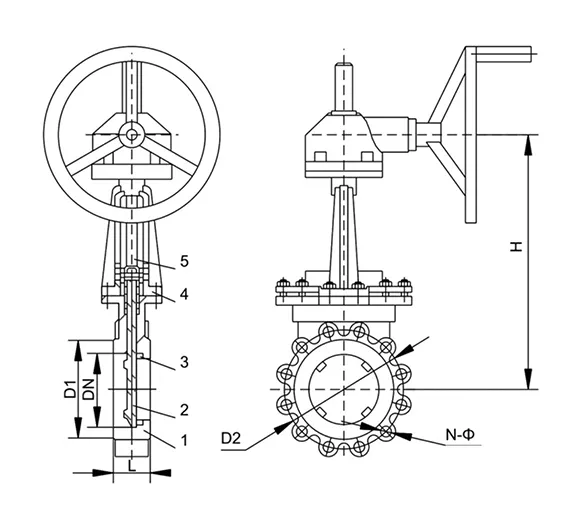10 月 . 18, 2024 12:48 Back to list
Understanding the Functionality and Applications of Foot Check Valves in Plumbing Systems
Understanding Foot Check Valves Function, Applications, and Benefits
Foot check valves are essential components in various fluid systems, primarily used in applications where preventing backflow is critical. The design and functionality of these valves make them suitable for numerous industries, including water treatment, oil and gas, and manufacturing. This article will provide an in-depth understanding of foot check valves, their applications, operational principles, and key advantages.
What is a Foot Check Valve?
A foot check valve is a type of check valve that is installed at the bottom of a vertical pipe, usually submerged in a fluid source. Its primary function is to prevent the backflow of fluid while allowing flow in one direction. This is especially important in applications involving pumps, where the risk of reverse flow can lead to operational inefficiencies and potential damage to the system.
Foot check valves typically consist of a body, a seat, and a movable disc or ball that acts as the closure mechanism. When fluid flows in the forward direction, it pushes the disc or ball off the seat, allowing fluid to pass through. Conversely, when the flow attempts to reverse, the disc or ball is forced back onto the seat, sealing the valve and preventing backflow.
Operational Principles
The operational principles of foot check valves hinge on their ability to respond to changes in fluid pressure. When the pump is operating and fluid is being drawn, the pressure difference across the valve keeps the closure element lifted away from the seat. This design ensures that the flow is smooth and uninterrupted.
However, if the pump stops or if there is a decrease in pressure due to system shutdown or maintenance, the fluid seeks to flow back. In this scenario, the pressure difference causes the closure element to drop back to its seat, effectively blocking the reverse flow and safeguarding the system's integrity.
Applications
Foot check valves are widely used in various industries due to their reliability and effectiveness in preventing reverse flow
. Some common applications include1. Water and Wastewater Management Foot check valves are installed in raw water intake lines and sewage pumping stations to ensure that the fluids do not flow back into the source bodies. This is crucial for maintaining the quality of water systems.
foot check valve

2. Oil and Gas In oil and gas production, maintaining flow direction is vital to avoid contamination and ensure safety. Foot check valves are utilized in pipelines and drilling operations to prevent backflow that could lead to hazardous situations.
3. Irrigation Systems In agricultural applications, foot check valves help in maintaining a consistent flow of water to irrigation systems, preventing backflow that could drain water from fields.
4. Industrial Processes Many manufacturing processes require controlled fluid flow. Foot check valves help maintain the desired flow direction in systems that involve chemical processing, cooling systems, and other critical operations.
Benefits of Foot Check Valves
The usage of foot check valves offers several advantages
- Prevention of Backflow The primary benefit is the effective prevention of backflow, which helps to maintain system efficiencies and protects against contamination.
- Maintenance of Prime In pump systems, foot check valves are essential for maintaining the prime within the pump. This ensures that the pump remains operational without requiring frequent priming.
- Durability and Reliability Generally made from robust materials such as brass, stainless steel, or PVC, foot check valves offer excellent durability and reliability, often requiring minimal maintenance.
- Cost-Effectiveness By protecting the pump and the system, foot check valves can greatly reduce the risk of damage and costly repairs, thereby providing a cost-effective solution.
Conclusion
Foot check valves play a crucial role in various fluid systems by ensuring that flow direction is maintained and backflow is effectively prevented. Their applications range from water management to industrial processes, highlighting their versatility and importance in modern engineering. By understanding the functionality, applications, and benefits of foot check valves, operators can make informed decisions on their use, enhancing system efficiency and reliability across multiple sectors. Adopting these valves is an essential step toward ensuring operational integrity and achieving desired outcomes in fluid management systems.
Share
-
Understanding the Differences Between Wafer Type Butterfly Valve and Lugged Butterfly ValveNewsOct.25,2024
-
The Efficiency of Wafer Type Butterfly Valve and Lugged Butterfly ValveNewsOct.25,2024
-
The Ultimate Guide to Industrial Swing Check Valve: Performance, Installation, and MaintenanceNewsOct.25,2024
-
Superior Performance with Industrial Swing Check Valve: The Essential Valve for Any SystemNewsOct.25,2024
-
Industrial Swing Check Valve: The Ideal Solution for Flow ControlNewsOct.25,2024
-
You Need to Know About Industrial Swing Check Valve: Functionality, Scope, and PerformanceNewsOct.25,2024